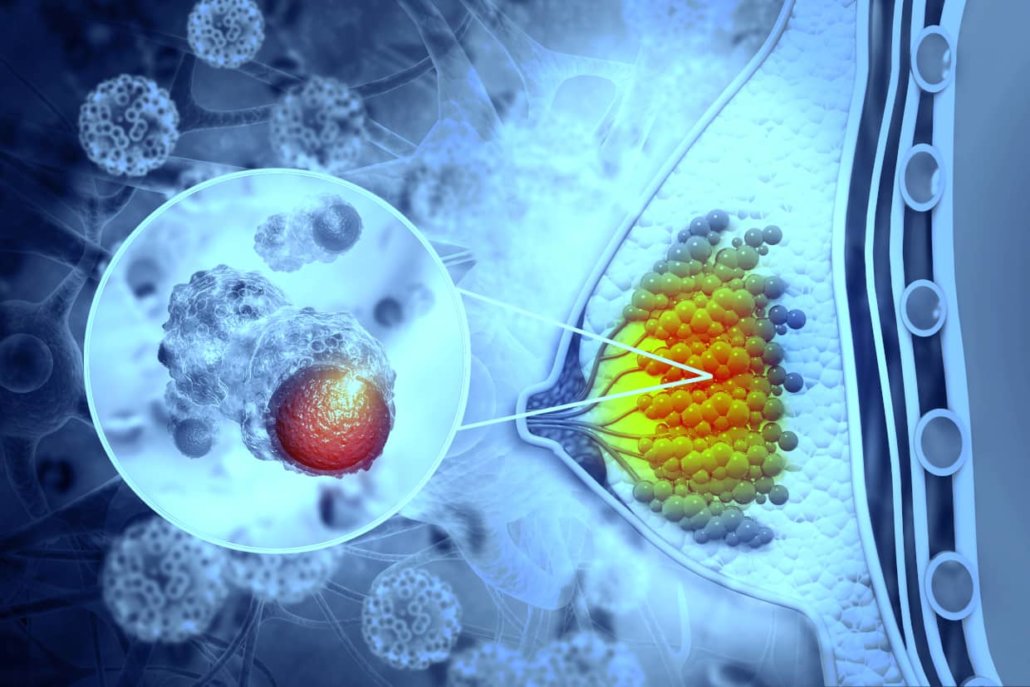Breathing control during irradiation
Breath gating during breast cancer radiation (also called “deep inspiration breath hold,” DIBH) improves sparing of healthy tissue. During the course of each therapy session, the organs move naturally with each breath. Breath gating involves analyzing breathing and irradiating only during specific breathing phases. This prevents unnecessary strain on the lungs and heart.
Arrange appointment
After a diagnosis of breast cancer, the treating medical team develops an individual strategy for treating the tumor. Our specialists in Munich and Wolfratshausen are available to help cure cancer by means of radiation therapy. You are welcome to talk personally with one of our specialists.
Where can you get respiratory gating for breast cancer radiation?
We offer gentle irradiation in the prone position at our location in the Schwabing Clinic on Kölner Platz in Munich. Ask for an appointment and clarify what advantages this form of therapy can have for your treatment!

What exactly does breath gating mean?
Breath gating during radiation represents control of the body during treatment. Irradiation takes place only in a previously precisely defined breathing phase. At the time of inhalation, the distance between the breast tissue and the heart is greatest, and it is precisely at this time that the rays are delivered to the tumor tissue. Holding your breath for a few seconds increases the irradiation periods and additionally improves the effect. Maximum inhalation is much more gentle on the heart.
Advantages of breath gating
In breast cancer radiation, the best possible cure often depends on the location of the internal organs. This is highly individual. The lower the radiation exposure to the heart and lungs, the lower the risk of damage in these areas.
Normally, a radiation-induced change in the heart becomes noticeable after about 10 years. Even though this occurs very rarely in modern radiotherapy, a significant reduction again has an extreme effect on the occurrence of these problems. In addition to breast cancer therapy, respiratory gating can also be used for lung or liver tumors to spare organs.
Another advantage of respiratory gating during irradiation is evident in the management of side effects. The lower the radiation doses in the healthy tissue areas, the less frequently side effects such as nausea or pneumonia occur.
After breast cancer treatment, follow-up is elementary to make sure that the patient is doing well, that the treatment was successful, that there were no subsequent complications and that there was no recurrence. Your gynecologist usually performs a follow-up examination every three months, which includes, for example, a palpation and an ultrasound. With the help of a mammogram – usually performed every 6 months after therapy – the glandular tissue can be additionally examined and assessed.
Most of the complaints recede with time and can also disappear completely. However, some patients may experience long-term changes in menstrual cycle, ovulation, and menstruation after chemotherapy. Radiation therapy is usually very well tolerated by patients. In contrast to chemotherapy, this is a local and not a systemic therapy, so that the side effects to be expected usually also occur only locally. This can be, for example, a reddening of the skin in the irradiated area – comparable to a sunburn. This usually occurs after the third week of treatment. In the further course, the skin then turns brown – as we also know from a sunburn – and then returns to the initial state before the start of radiation therapy.
Every now and then you may feel a little tired from the radiation, this is also called “radiation hangover”. This fatigue also goes away after the end of the therapy. Sometimes the lymphatic channels must also be treated. In such a case, there may be a slight scratching in the throat at the end of the therapy, which will subside after the end of the therapy. Patients are seen by a doctor during therapy and, depending on the symptoms, appropriate creams or medications are prescribed, which usually quickly alleviate the symptoms.
The treatment plan is individually tailored to the patient so that the cancer can be treated in the best possible way. Although the therapy should not be unduly stressful for the patient, side effects can still occur during and after the individual treatment steps.
With any operation, infections may occur or wound healing may be disturbed. Depending on the extent of the surgery, secondary symptoms such as nerve damage and pain may also be observed. If the breast had to be removed during surgery, there may be tension or pain in the shoulder and chest area because the weight distribution is now different. Please consult your attending physician and talk to him about your complaints and discuss possible solutions together.
Chemotherapy affects the hematopoietic system. Therefore, it is often observed that patients are tired and weary (fatigue) and that their immune system is weakened. Furthermore, nausea, diarrhea, and inflammation often occur as the treatment affects mucosal cell formation. Hair loss is also often seen as hair cells become irritated.


